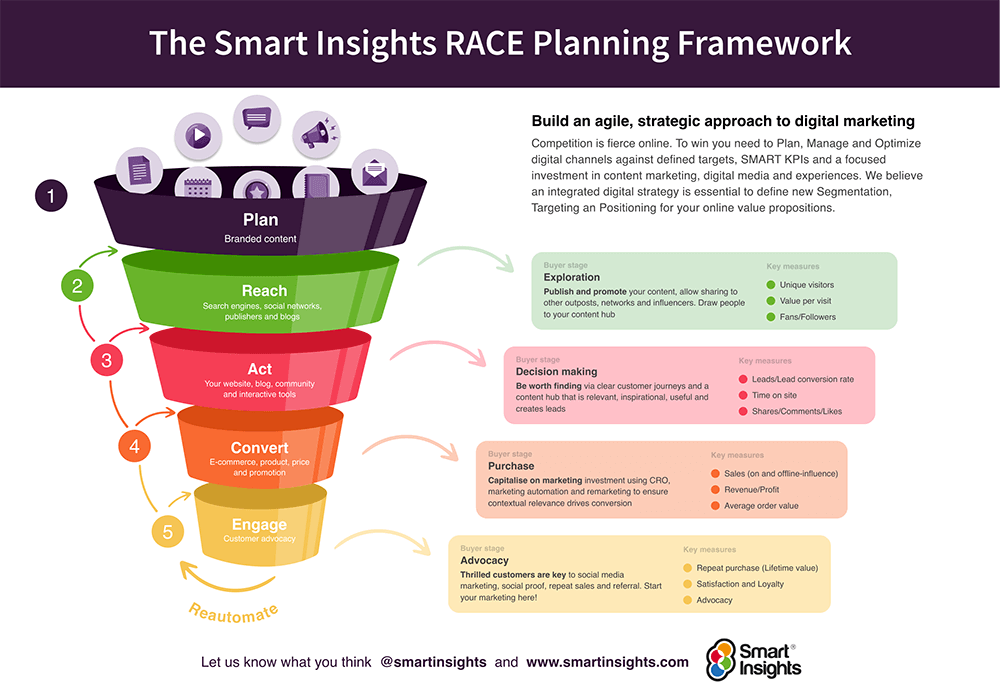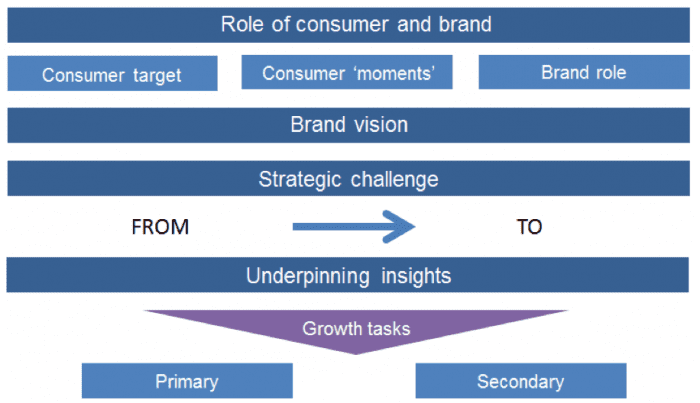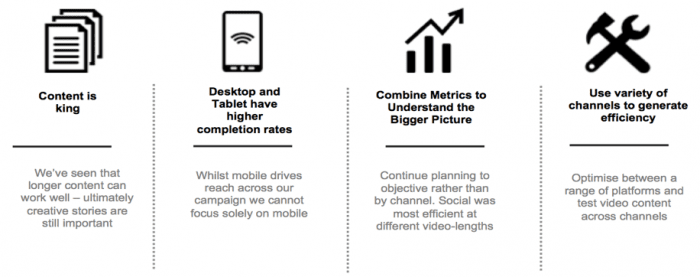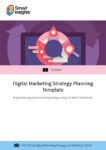Review your campaigns and learn how you can improve your digital media performance with our marketing campaign analysis tools
The process of setting up, brainstorming, planning, and ultimately delivering digital marketing campaigns is an exhausting, challenging, yet fun and extremely rewarding process.
Once the campaign goes live, you can witness the fruits of your labor. However, all digital marketing campaigns must at some point come to an end and there is always one final step in the process: campaign analysis.
Every company, brand, or agency will approach the end of a campaign differently, with some going into detail and others taking a much broader view. However whilst digital campaigns can be quite simple and straightforward, perhaps with maybe just one or two channels, others may be more complex and multifaceted.
I, therefore, believe it’s always best to err on the side of detail so that you can get a true picture of how different elements of a campaign performed in the context of the overall marketing campaign objective. The main advantages of marketing campaign analysis include:
- Understand what elements of the marketing campaign worked well/ not so well
- Learn how the target audience responded to the campaign
- Review the ultimate effectiveness of the campaign versus objectives
- Discuss the campaign with key stakeholders
- Provide valuable learnings for future campaigns
Because digital campaigns vary so wildly, I’m going to use this article to provide an overview of what in my experience are the most important components to include within a post-campaign analysis dashboard. This can be useful for in-house marketing teams or for discussion with supporting agency partners to create something that works for everyone.
If you’re either creating or initiating media campaign analysis, I would also advise that you arrange a meeting or forum to discuss the outputs of the report. By all means, send the report out in advance as a pre-read but it’s usually best to get all the key stakeholders together as a group to discuss the campaign results.
We have a wealth of marketing campaign solutions to help support marketers and managers in creating efficient and effective media plans. From objectives, strategy, and tactics, to post-campaign reviews, all our marketing tools are integrated across the RACE Framework.
Key steps and components to creating useful marketing campaign analytics
1. Review your campaign digital media
We recommend applying the RACE Framework to plan, manage, and optimize all marketing campaigns and business as usual. Structured across your key customer touchpoints of reach, act, convert, and engage, when you use the RACE Framework to analyze campaigns you can use data and customer insights to quickly track and improve your customers’ journeys.

Smart Insights Business Members are using the RACE Framework to measure their marketing activities, identify challenges and opportunities, and react with data-driven strategies and tactics to win more customers.
2. Review your marketing campaign objectives and KPIs
As a priority, it’s crucial to set the right context and tone for the post-campaign analysis. At the starting point it will be important to provide a brief overview of the campaign’s objectives and KPIs:

Being crystal clear about what the brand was ultimately looking to achieve with the campaign will enable those involved in the PCA to associate the results with desired outcomes and make better sense of the data.
Rather than waiting for a big reveal, it’s also advisable to include an executive summary at an early stage in the report to indicate whether the campaign successfully met the objectives it set out to achieve. Whether this is ultimately good news or not, it helps prime the audience for the right discussions throughout.
3. Break down your marketing campaign results by media channels
Now you can start to go into more detail about how each element of the campaign performed. This will be the section most digital marketing specialists and brand managers will be interested in reviewing as it will go into specifics about all the different digital activities.
This section of the report should focus on:
- Key channels
- Channel objectives
- Performance is broken down by KPIs and metrics
Business Members can download our post-campaign analysis report template to structure their campaign reporting.
To give you an idea as to how this could be structured, I’ve used the following channels to demonstrate how this section of the PCA can be constructed:
Social
Social media will likely be used primarily as a paid channel to drive reach and awareness. Organic social creative principles are still very important but it’s worth remembering that organic reach, especially on Facebook, is declining.
Objective: build awareness
Metrics:
- CPM/ CPVV (Cost per Valued View) – consider CPVV versus different content durations
- Percentage of target audience reached – how effectively your ads are reaching the right people for your campaign
- Frequency – the time advert served to someone across different channels
- View thru rate – a measure of the percentage of the video watched)
- Positive earned media – where people have shared your content positively
- Brand buzz – relates to the number of conversations taking place around the brand involved in the campaign
Search
Search may include both paid and organic activity, however, for specific digital campaigns, there will likely be an emphasis on paid as this will be more targeted/ focused on campaign messaging and creative.
Objective: influence consideration and drive action
Metrics:
- Quality score – the quality and relevance of your paid search landing page
- Click-through rate – gauge how well your keywords and ads are performing by how many visitors click on the ads
- Impressions – the number of times your ads are being viewed by searchers
- Average position – determines how your ad typically ranks versus other ads
- Conversion rate – how many people who click on your ad go through to perform a desired action on your site
Website
Your website is likely to be the hub or center-point of the campaign, bringing together key messaging, creative, and conversion points for prospects and customers. Many brands look to develop specific campaign landing pages or microsites for their campaigns, enabling them to be more targeted and specific around campaign messaging.
Objective: drive action and engagement
Metrics:
- Total traffic – macro view of how the campaign has driven traffic to the site
- Traffic by channel – traffic to the site segmented by main campaign channels
- Bounce rate – percentage of visitors who leave before performing a desired action
- Conversions – a quantifiable measure of how visitors have performed a desired action
- Data capture – the quality of data obtained from visitors arriving at your site
Our integrated Learning Paths offer marketing training, tools, and templates to empower marketers to optimize their key customer touchpoints to drive results.
4. Provide key campaign analysis take-outs
After providing a richer review of performance by channel it’s worth covering the main themes and take-outs from the report. This section (along with the executive summary at the start of the report) is likely to be of most interest to senior leaders and non-digital specialists.

5. Recommendations for better campaign analysis
As a follow-on to the key take-outs section, the final section of the report should highlight the main recommendations for the next steps:
- Review results versus the plan – avoid getting channeled down the areas that look good. Remember that big learnings also come from failure
- Analyze step-change learnings – this may include new channels and/ or formats, alongside continuous improvement learnings
- Include lessons learned and recommendations for future campaigns – highlight successes and failures and elements that may require further testing and refinement
If your business is new to the RACE Framework, why not use your campaign analysis to introduce this structure? On just one page, you can outline the key features of your customers’ journeys through reach, act, convert, and engage, and make clear plans for the future.
Thousands of Smart Insights members around the globe are using their membership to upskill and improve their marketing strategies and tactics. Our Business Member marketing solutions empower marketing leaders to stay up to date with case studies, best practice advice, and actionable marketing tools.









More Stories
Opportunity Never Comes But Once
Tips for Turning A Vacation Into A Volunteer Opportunity
What’s an Opportunity Transfer?